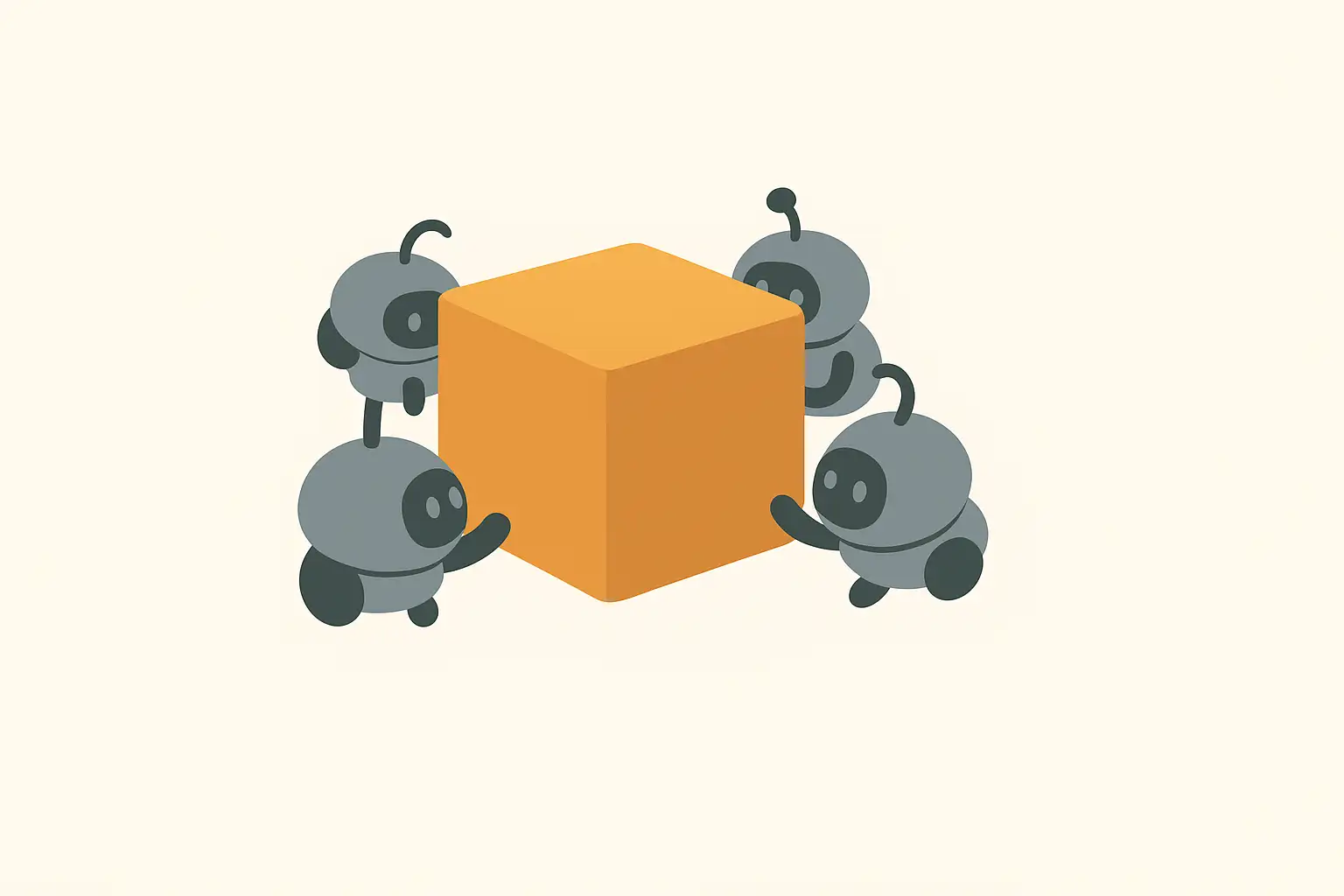Imagine a group of small robots working together to move a heavy box across a room. Alone, each robot isn’t strong enough to do the job. But as a team, they can surround the box, push it from all sides, and guide it safely to its destination.
This idea—cooperative robot teamwork—isn’t just science fiction. It’s an active area of research that could transform industries like warehousing, construction, and disaster response. And thanks to some clever use of existing technology, a recent project shows how robots might communicate and collaborate more easily than ever before.
The Challenge of Robot Cooperation
When multiple robots need to work together, the hardest part isn’t just moving—it’s talking to each other. Robots must constantly share information about where they are, where the object is, and how to move without bumping into walls or breaking formation.
Traditionally, this requires creating complicated custom communication systems, which can be slow to develop and fragile in real-world settings.
A Clever Shortcut: Borrowing from Cloud Computing
Instead of inventing a brand-new way for robots to talk, researcher Priyank Narvekar explored something already used in cloud computing: an in-memory data grid.
Think of it like a super-fast shared notebook that all robots can write in and read from instantly. One robot can update its position, another can record the planned path, and all the others immediately see the same information. No endless back-and-forth messaging—just one reliable place to stay in sync.
For this project, the team used a platform called Hazelcast, which is normally found in large-scale IT systems. Bringing it into robotics is a fresh twist that simplifies the entire communication problem.
How the Robots Work Together
The system works in two steps:
-
Forming a Cage – The robots surround the object, creating a kind of moving fence.
-
Transporting the Object – They push the object together, keeping the cage intact as they move toward the goal.
By treating the robots and the object as if they were one big shape, the team could plan a single path for the group. Each robot then figures out its own role along that path, ensuring smooth and coordinated motion.
Putting It to the Test
Simulations showed that the robot team could successfully move objects in open areas, around obstacles, and even through passages. When things went wrong—like a robot failing or communication dropping—the system noticed the problem and stopped, rather than losing control.
One limitation? Narrow spaces. Since the robots move as a fixed formation, they can’t squeeze through tight gaps… yet. Future work may allow them to “reshape” themselves dynamically, much like people carrying furniture through a doorway.
Why It Matters
Robotic teamwork could one day help with:
-
Warehouses – moving packages together with fewer large machines.
-
Emergency response – robots rescuing items or clearing paths in disaster zones.
-
Construction and manufacturing – teams of robots handling large or awkward materials.
By using existing tech in a new way, this research shows how we can get closer to making robotic teamwork smarter, faster, and more reliable.
Final Thought
Robots don’t always need more complex hardware to get better—they sometimes just need a smarter way to share information. With ideas like these, the future of robotics looks less like lone machines and more like teams working together, just like us.
Reference
This article is based on the master’s thesis:
Priyank Narvekar (2024). A data grid strategy for non-prehensile object transport by a multi-robot system. Memorial University of Newfoundland. Available at: https://memorial.scholaris.ca/items/fa8bd04d-8aac-45e2-886c-271a89559d2e

